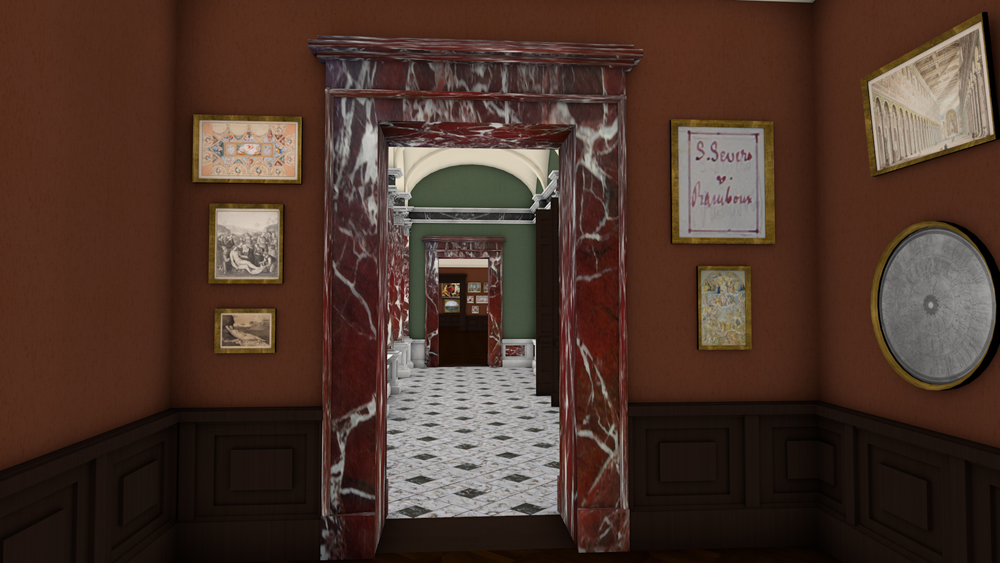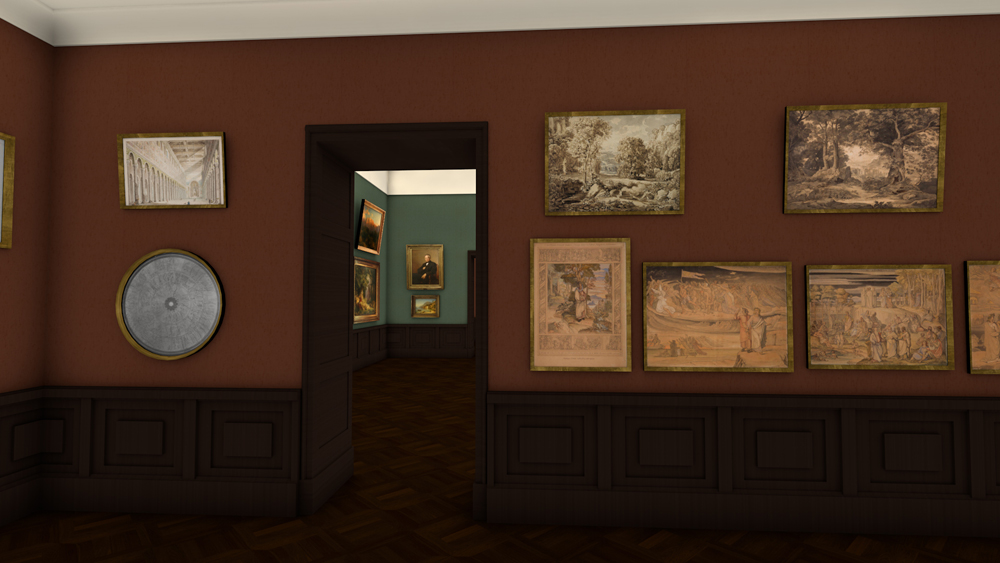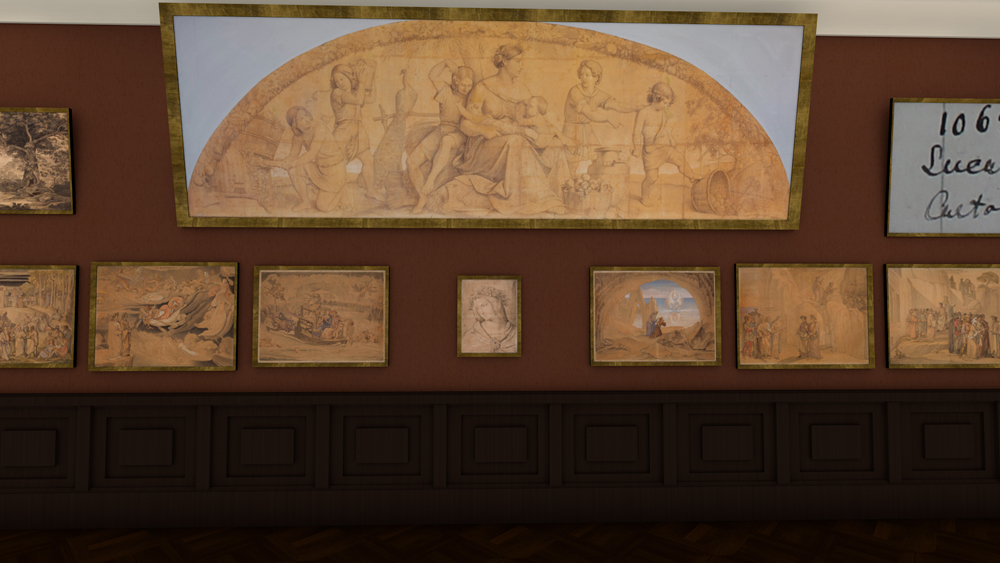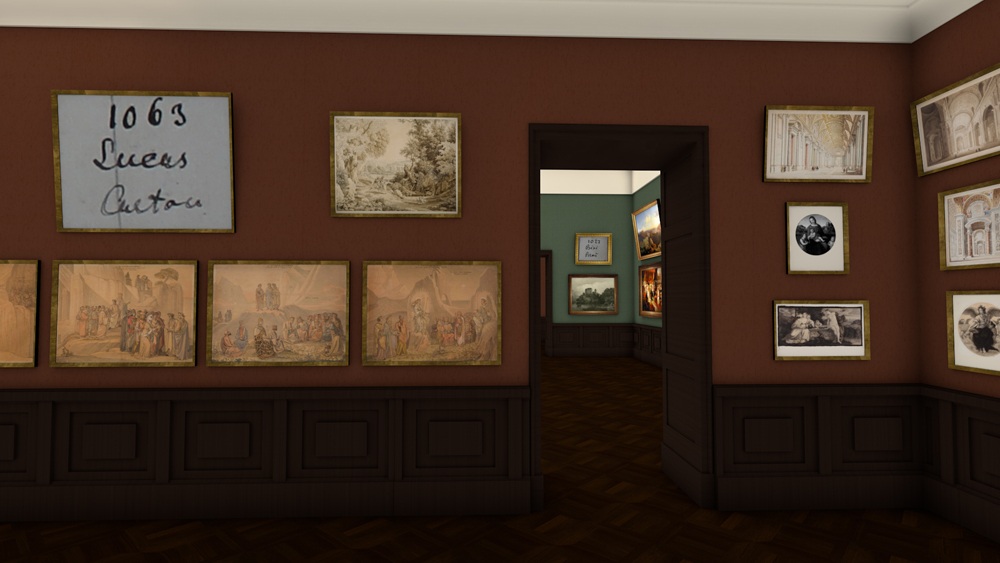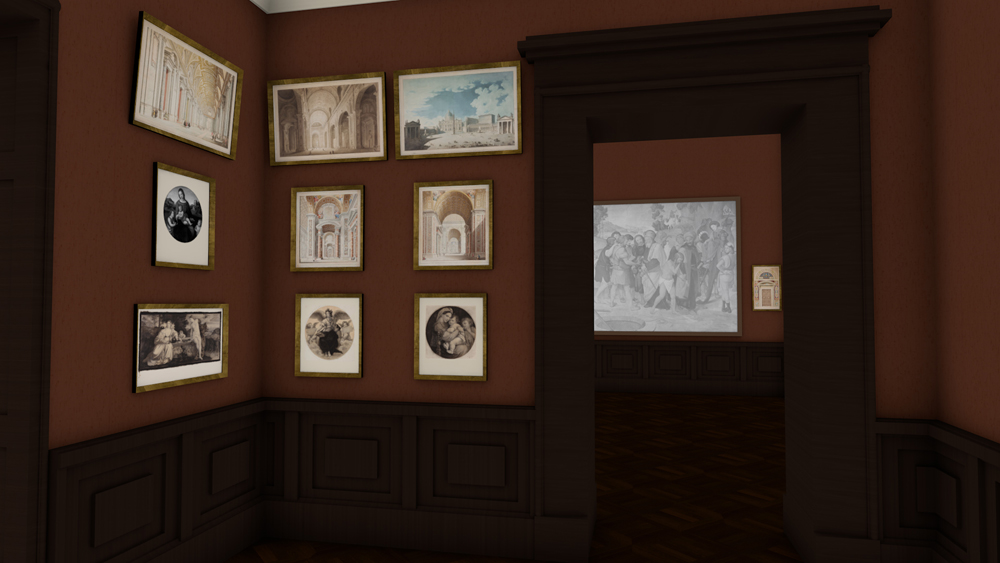1878 Southeastern gallery
The entanglement
of Italia and Germania
For the first time, the walls, which were about 25 meters in length, provided an opportunity to exhibit the impressive collection of large-format drawings and fresco cartoons that had steadily been expanded since the 1830s. The most important artist of the eastern gallery, again, was Philipp Veit.
Veit’s design for the biblical subject of the “Seven Years of Abundance” complemented Overbeck’s scene from the story of Joseph. Both works were created for the house of the Prussian general consul, Bartholdy, in Rome. According to Malß’s initial plans, they were to be presented in the adjacent southern corner room. The design sketch of the head of Germania, centrally hung below these cartoons, formed the connection with Veit’s main work in the small skylight room. Aesthetic variation, as was common in the gallery, was provided by the flanking landscape cartoons by Carl Philipp Fohr and Johann Christian Reinhart, as well as by Johann Anton Ramboux’s series of illustrations for Dante’s “Divine Comedy”. The close interlocking of Italia and Germania, which determined the hanging in the two corner rooms, was also evident on the two short walls of the elongated gallery room. Exhibited here, among other works, were drawn copies of paintings by Raphael, Perugino, and Titian. These had been made by Johann Nicolaus Hoff and Eugen Eduard Schäffer with the intention of being reproduced as engravings.
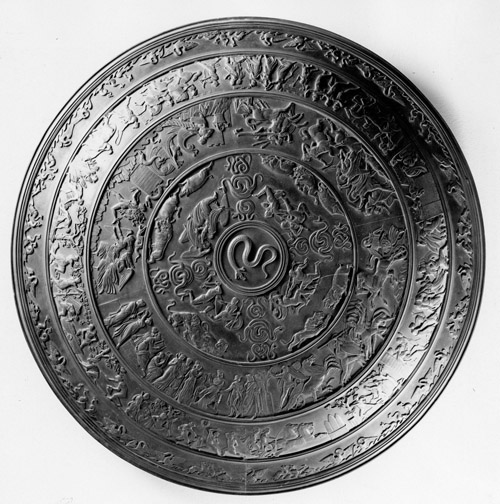
Basis
for the reconstruction
Director Malß altered the hanging plan for the southern galleries two or three times.
In the eastern room, the exhibition cabinets that had originally been planned were abandoned in favour of additional wall space.
The presentation of the large-format cartoons in the western gallery may not have failed solely due to the severe damage Schnorr von Carolsfeld’s “Wedding at Cana” (inv.-no. 1012) had suffered. Because of its size, there would have been no space below the cartoons already been planned for the room’s upper register.
In a further revision stage, Malß added a colour drawing by Peter von Cornelius to the right of Schnorr von Carolsfeld’s “Feast of Charlemagne (The Wedding of Ruggiero and Bradamante)”. He failed, however, to remove the “Last Judgement” (inv.-no. 900) from the plan of the eastern gallery.
Across the corner, on the other side of the left door in the eastern gallery, Malß later pasted a placeholder for Philipp Veit’s design for the “Shield of Achilles” (inv.-no. 899). Its shape corresponded with the second round work on the other side of the longitudinal wall. Its inventory number, barely legible, likely refers to Ludwig von Schwanthaler’s relief of the “Shield of Hercules” (inv.-no. St.P4, Liebieghaus Skulpturensammlung, Frankfurt am Main), which would have been a thematically meaningful supplement to the Shield of Achilles. As the identification cannot be determined with certainty, we have opted not to include this alteration.




